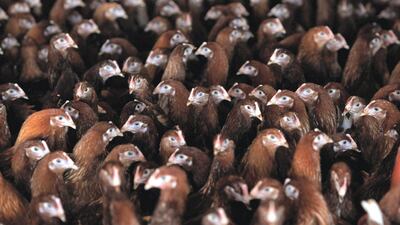With Europe battling a second wave of Covid-19, attention has been diverted from another highly pathogenic virus that could jump from animals to human beings.
The European Food Safety Authority (EFSA) said that Europe is facing the very real prospect of the lethal HPAI H5N8 strain of avian influenza spreading to countries currently free from the disease.
In a public health announcement eerily reminiscent of the dire Covid-based proclamations the world has become so accustomed to, the EFSA's Animal and Plant Health Unit head, Nik Kriz, called for "close co-operation between animal, public, environmental and occupational health authorities".
The watchdog also implored national veterinary agencies to increase surveillance and restrictions.
Avian lockdown in UK
The entreaty is being heeded in the UK where poultry keepers are being asked to implement something akin to the lockdown measures currently circumscribing England's human population.
Farmers face the prospect of fines or even imprisonment if they fail to comply with a range of strictures, including the restriction of access for non-essential people, the removal of sources of wild bird food, and the regular disinfection of workers' footwear and clothes.
The beefed-up protocols follow the detection of the more potent strain at premises near Melton Mowbray in Leicestershire and at a wetland centre near Stroud in Gloucestershire.

Where is the bird flu in Europe?
A change in the threat bird flu poses in Europe has occurred since the beginning of November when the EFSA issued a general warning on the back of outbreaks in Russia and Kazakhstan.
This has now escalated to there being a "high risk" – although the risk to people remains "very low".
Reports of new cases have mushroomed in recent days.
Six further cases were reported in the Netherlands while in Germany there were 76 more reports of the strain.
UAE issues poultry ban
The outbreak has not gone unnoticed by rest of the world.
On Saturday The National reported that the UAE has banned the import of birds and poultry products from several European countries.
The Ministry of Climate Change and Environment enforced the restrictions on areas that had recorded a surge in bird flu cases in November.
The authority prohibited the import of all species of domestic and wild live birds, ornamental birds, chicks, hatching eggs and their thermally untreated byproducts from the Netherlands, Germany, and select areas of Russia.
The import of poultry meat and table eggs from several regions of the UK was also banned as part of the safety measures.


